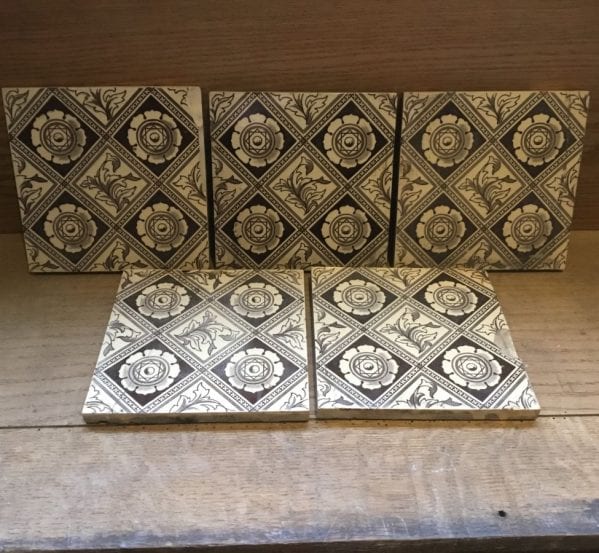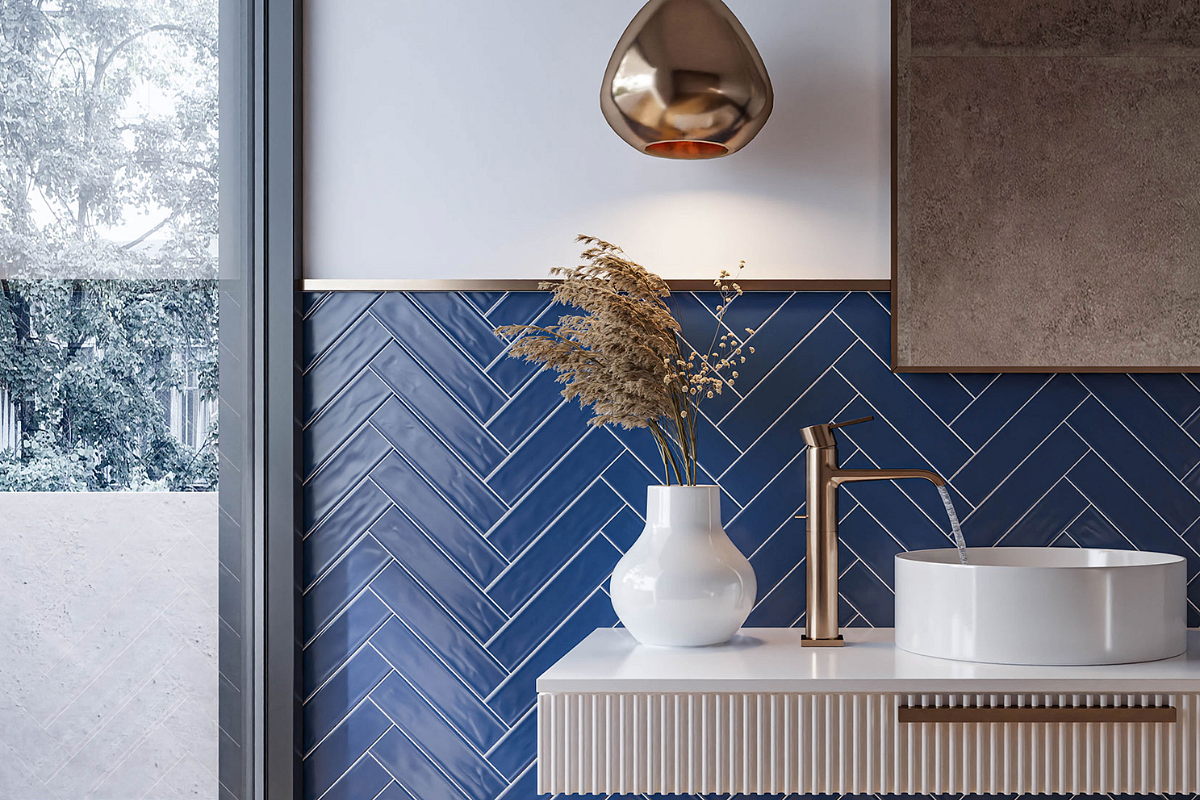Unlocking the Mysteries of Antique Fireplace Tiles
In a world that’s constantly evolving, there’s something captivating about the past. The allure of bygone eras, with their intricate designs and timeless beauty, draws us into a world rich in history and culture. One often-overlooked window into the past lies right within our homes – antique fireplace tiles. These exquisite works of art, often hidden in plain sight, have stories to tell and secrets to reveal. Join us on a visual journey through time as we delve into the fascinating world of antique fireplace tiles and the hidden language they speak.
Expert Insights: A Glimpse into the Enigmatic World of Antique Fireplace Tiles
To kickstart our exploration, we had the privilege of speaking with an expert from ThornhillGalleries, a renowned name in the world of antique fireplaces and fireplace tiles. This expert, who wishes to remain unnamed, shed light on the significance of these tiles in historical homes.
According to this expert, “Antique fireplace tiles are like silent witnesses to history. They have been an integral part of British homes for centuries, serving both functional and aesthetic purposes. While they were designed to protect the hearth, they also hold a unique visual narrative that reflects the tastes, trends, and cultural influences of their respective time periods.”
The Evolution of Antique Fireplace Tiles: A Historical Overview
To truly understand the secret language of antique fireplace tiles, it’s essential to trace their evolution through history. These tiles have graced the hearths of British homes since the medieval period, and each era has left its distinctive mark.
Medieval Marvels: The Birth of Fireplace Tiles (12th-15th Century)
Our journey begins in the medieval period when fireplace tiles first made their appearance. During this time, fireplace design was a reflection of the architectural style of the period. The tiles featured intricate geometric patterns and motifs inspired by nature. Symbols of protection and good fortune were also commonly incorporated, reflecting the superstitions of the time.
Tudor Elegance: Tiles as Status Symbols (16th Century)
The Tudor era marked a shift in the design of fireplace tiles. As prosperity and trade flourished, so did the demand for luxury. Tiles became status symbols, and their designs grew more opulent. The use of vibrant colors, heraldic symbols, and intricate designs became a hallmark of this period.
Stuart Sophistication: Royal Influence (17th Century)
With the Stuart dynasty came a period of refinement and elegance. The influence of royalty was profound, and fireplace tiles often featured royal coats of arms and emblems. The tiles became not just functional but also pieces of art that showcased the grandeur of the time.
Georgian Grace: Neoclassical Revival (18th Century)
The Georgian era brought about a neoclassical revival. Fireplace tiles during this period were characterized by symmetry, classical motifs, and a restrained color palette. The emphasis shifted from opulence to balance and proportion.
Victorian Extravagance: A Riot of Colors (19th Century)
Perhaps the most iconic era for antique fireplace tiles, the Victorian period was marked by an explosion of colors and designs. The Industrial Revolution allowed for mass production, making these tiles more accessible to a wider audience. Victorian tiles often featured intricate floral patterns, historical scenes, and bold, vibrant colors.
Edwardian Elegance: The Last Hurrah (Early 20th Century)
The Edwardian era marked the end of the era of mass-produced fireplace tiles. The designs of this period were more restrained and often featured simple floral motifs and pastel colors. The decline of fireplace tile production was further accelerated by the advent of central heating.
Cracking the Code: Symbols and Motifs in Antique Fireplace Tiles
As we delve deeper into the secret language of antique fireplace tiles, it’s essential to decipher the symbols and motifs embedded within their designs. Each tile carries a unique message, a glimpse into the beliefs and values of the time.
Nature’s Bounty
One of the most common motifs found in antique fireplace tiles is the depiction of natural elements. Flowers, leaves, and vines are often intricately woven into the design, symbolizing the cycle of life, growth, and renewal. In a time when nature played a vital role in people’s lives, these motifs held deep significance.
Heraldic Symbols
During the Tudor and Stuart periods, fireplace tiles often featured heraldic symbols, such as coats of arms and family crests. These symbols not only showcased the owner’s lineage but also served as a mark of prestige and social standing.
Mythological Imagery
Mythological figures and scenes were popular subjects for Victorian-era fireplace tiles. These tiles often depicted stories from Greek and Roman mythology, adding an air of sophistication and culture to the home.
Religious Imagery
In earlier periods, religious imagery was commonly incorporated into fireplace tiles. Symbols like crosses, angels, and biblical scenes served as a reminder of faith and piety in the household.
Gothic Revival
The Gothic Revival movement of the 19th century found expression in fireplace tiles. Designs featuring pointed arches, tracery, and medieval-inspired motifs reflected a fascination with the romanticism of the past.
The Language of Color
Color is another vital element in understanding the language of antique fireplace tiles. Different colors were used to convey specific meanings and emotions.
Red: Often associated with love and passion, red tiles could symbolize warmth and affection in the home.
Blue: The color of calm and tranquility, blue tiles created a serene atmosphere in the room.
Green: Representing nature and renewal, green tiles brought a sense of vitality and freshness.
Gold: Signifying wealth and prosperity, gold accents added a touch of opulence to the fireplace.
Collecting Antique Fireplace Tiles: A Passion for the Past
For enthusiasts and collectors, antique fireplace tiles offer a unique opportunity to own a piece of history. The thrill of uncovering rare tiles with unique designs and stories behind them is a passion shared by many. Collectors often search for tiles that are in good condition, with minimal damage or wear.
Provenance Matters
The history and origin of a tile can significantly affect its value and appeal to collectors. Tiles that can be traced back to specific historic homes or important commissions are highly sought after.
Restoration and Preservation
Restoring antique fireplace tiles requires skill and care. Experienced restorers can carefully clean, repair, and replace damaged tiles, bringing them back to their former glory while preserving their historical integrity.
Displaying Antique Fireplace Tiles
Antique fireplace tiles can be displayed in various ways. Some collectors choose to incorporate them into functional fireplaces, while others prefer to frame and hang them as pieces of art. The choice often depends on the tile’s condition and the collector’s aesthetic preferences.
Appreciating the Craftsmanship
Beyond their historical significance, antique fireplace tiles are also celebrated for the craftsmanship that went into creating them. The intricate hand-painted designs and attention to detail showcase the skill of the artisans who crafted these tiles centuries ago.
Preserving a Piece of History
As we conclude our visual journey through time, it’s evident that antique fireplace tiles are more than just decorative elements in historic homes. They are windows to the past, offering us a glimpse into the lives, values, and aesthetics of those who came before us.
Preserving and appreciating these tiles is not only a tribute to craftsmanship but also a celebration of our rich cultural heritage. So, the next time you sit by a roaring fire in an old British home, take a moment to look at the tiles adorning the fireplace. You might just uncover a hidden language, a story waiting to be told, and a connection to the past that will warm your heart.
In our fast-paced world, antique fireplace tiles stand as timeless reminders of the beauty and significance of the past. They are not merely relics but living pieces of history that continue to inspire awe and admiration. So, let’s cherish these treasures, for they hold within them the secret language of bygone eras, waiting for us to decipher and appreciate.











